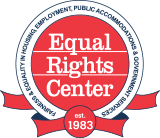By Melvina C. Ford, Executive Director
The Housing Choice Voucher Program is the largest federal housing subsidy program, assisting more than 2 million low income, elderly and or disabled American families. Previously known as Section 8, this system allows participants to find and pay market-rate for a decent, sanitary and safe home in the neighborhood of their choice. Unfortunately, discrimination against voucher holders is often rampant and coupled with deeply entrenched racial and gender based stereotypes about voucher holders. Source of Income (SOI) anti-discrimination laws at the local level can prohibit landlords from discriminating against voucher holders solely because they use a voucher to pay rent and result in higher voucher utilization rates in less racially segregated neighborhoods.
At its best, the Housing Choice Voucher Program enables families to escape high-risk communities and access quality neighborhoods, jobs, schools and necessary services. The program promotes diversity with respect to race, ethnicity, and socioeconomic status, however, SOI anti-discrimination laws are a critical component to safeguarding these ideals and best practices.
SOI anti-discrimination laws ensure that as long as an individual has sufficient funds to pay rent, a housing provider cannot refuse the individual’s application solely on the basis of the income’s origination, often including a housing choice voucher. States such as California, Connecticut, Maine, Massachusetts, Minnesota, New Jersey, North Dakota, Oklahoma, Oregon, Utah, Vermont, Wisconsin and Washington, DC have implemented laws that include SOI protection. Additionally, over 30 local jurisdictions have also adopted anti-discrimination SOI laws including Montgomery County, Maryland.
Unfortunately, private landlords continue to discriminate- both blatantly and discretely- against Housing Choice Voucher holders, causing significant challenges for families trying to find a safe place to call home and thwarting the success and effectiveness of the program.
Discrimination against voucher holders has an overall disparate impact on people of color in many communities because the legacies of segregation and institutionalized discrimination ensure that in many places, people of color, particularly women headed households of color, rely on vouchers to meet their families’ housing needs. Specifically, 45% of housing voucher holders are African American, 16% are Hispanic and 35% are White. Strikingly, 83% of program participants are female-headed households, and over 80% of participants across racial demographics have a household income of less than $20,000 per year. Blatant racial discrimination in housing is less common today than it was decades ago, though it does still exist. More common today are subtle and indirect tactics or fewer options offered to minority families than to their white counterparts. Source of income discrimination is a prime example of these more subtle forms of discrimination as a voucher is used by landlords as what looks to be a race neutral proxy. Although these acts of discrimination are more difficult to detect, they continue to rob deserving families and communities alike by creating centralized and concentrated areas of poverty, a lack of diversity and tremendous geographical and economic disparities, especially in urban settings.
Needless to say, the need for housing vouchers is real. In Washington, DC alone there are currently 10,500 families who are Housing Choice Voucher Program participants. The program’s waitlist reaches into the thousands. Meanwhile, African Americans in D.C. are largely concentrated in the City’s Southeast quadrant, where over 90% of the population is Black. The median household income of African American households is just 37% that of non–Latino White households.
As an African American woman and litigator born on the heels of the Civil Rights Movement, not only do I see the value of the Housing Choice Voucher Program, but I also share a great respect and appreciation for the system’s design, especially in the way that it prioritizes a family’s freedom to choose where they live.
As a thought leader on advancing justice and equality in some of society’s most fundamental spaces, including housing, employment, and public accommodations, I also understand the direct correlation between where one lives and sociological implications like access to quality healthcare, high paying jobs and fresh foods.
But nothing makes me more sensitive and keenly aware of the impact and power of choosing where to live than being a mother. I stand with ProPublica reporter Nikole Hannah-Jones when she suggests that “[On] every measure of well-being and opportunity, the foundation is where you live.” Through my “mom scope” I understand that all parents want and deserve the best opportunities for their children to thrive. My thoughts permeate through high-level potential risks, and hone in on some of the harsh realities associated with concentrated, high-risk neighborhoods and zip codes: factors such as increased infant mortality rates, decreased graduation and college matriculation rates, poor nutrition, mass incarceration and shorter life expectancy.
These unforgiving implications motivate my work and the work of the ERC. They give new relevance to the strides we continue to make in innovative testing methodologies to detect, investigate and remediate housing discrimination. We will continue to enforce anti-discrimination source of income laws on the local front, advocate for such protections where none exist, and provide training, outreach, research and enforcement until we all recognize that this is a human issue, one that affects us all. We should all be able to vouch for that.

